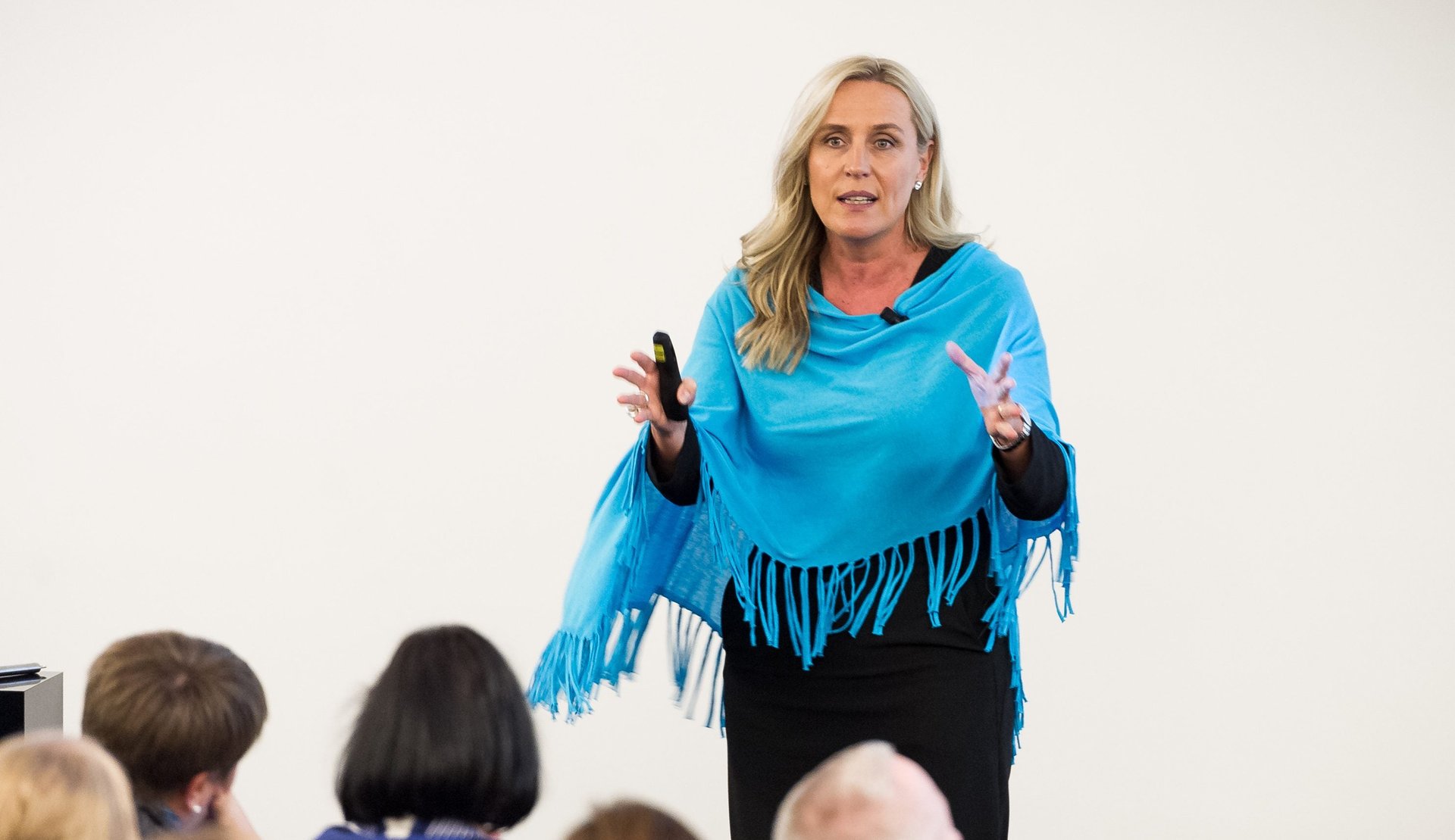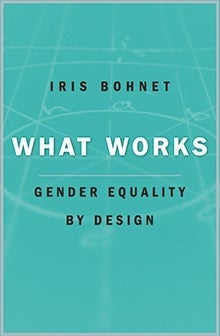Harvard economist Iris Bohnet on how to design a hiring process that’s fair for everyone
Gender bias in the workplace can feel like an intractable problem. Whether we’re reading about boorish or abusive behavior in the office, the dearth of female CEOs in the Fortune 500, or statistics that predict the gap between men’s and women’s wages in the US won’t close until 2058, it’s hard to think change is possible.


Gender bias in the workplace can feel like an intractable problem. Whether we’re reading about boorish or abusive behavior in the office, the dearth of female CEOs in the Fortune 500, or statistics that predict the gap between men’s and women’s wages in the US won’t close until 2058, it’s hard to think change is possible.
Despite being an economist by training, Iris Bohnet is not so gloomy. Bohnet, director of the Women and Public Policy Program at Harvard’s Kennedy School, argues it’s not only possible for employers to level the playing field, but in many cases it’s easy, inexpensive, and useful for achieving their business goals.
In her 2016 book, What Works: Gender Equality by Design, Bohnet proposes fixes to existing systems based on scientifically tested evidence. For example, she says, job postings should be scrutinized for gendered language that might discourage potential applicants, and interviews should be structured, with all prospective hires asked the same questions, so personal connections or shared experiences don’t favor any candidates.
Ultimately, every system employers use to hire and promote is the product of design, Bohnet says. Why not design them so they work better? Quartz At Work spoke with Bohnet about why companies are slow to enact even easy solutions, how to account for soft skills in hiring, and whether Silicon Valley has unique challenges in overcoming gender bias. This transcript has been lightly edited for length and clarity.
Quartz At Work: One central theme running through your book is that the systems we have in place in our offices, schools, and universities essentially tilt the field against women, because they favor traits like competitiveness and outward self-confidence. Is it possible to change the world to fix that?
Iris Bohnet: I’m not saying it’s always tilted against women. What I’m trying to say is the system is tilted against counter-sterotypical individuals. If you apply to a position as a kindergarten teacher, for example, it will be tilted against men, and if you apply for a position as an engineer, it will be against women.
We have been trying to fix mindsets, kind of hoping that would help in giving everyone equal opportunity. Sadly enough, I’m not particularly optimistic about diversity training, per se. Our minds are actually kind of hard to fix. I suggest an alternative, and argue that we should take bias out of our systems instead.
If there’s no evidence the training works, are companies wasting their time and money?
Yes. (laughs)
The answer has to be yes. Now, I can be more specific. We should get better at measuring and evaluating whether what we’re doing is actually working. We actually haven’t measured enough. The little evidence we do have is not promising. But I don’t want to exclude the possibility that somebody will figure out a training that actually works.
I do think we have some ingredients of what successful training will look like. Any training has to have the component of raising awareness, but that’s where most training stops. We have to try hard to bridge the intention-action gap. So you might be aware of your biases and you might intend to overcome them and not behave in a sexist or racist manner, but it actually is hard to do.
This is not a dilemma we only face in the diversity space, but more generally, when we think about health or healthy eating, or exercising—we often have these virtuous intentions and don’t get around to following through. A more effective training has to have that component of the followthrough. What does this now mean for my job, for my work tomorrow, and how do I implement the things we just learned?
What are the obstacles to what appear to be common-sense approaches, like blinding resumes and standardizing interview questions, to eliminate unconscious bias in hiring? Will those become accepted practice?
It’s a combination of things. First of all, I still encounter quite a number of people who argue they just trust their judgment. They look into someone’s eyes and feel if someone is a good fit for the company or not.
There’s also research by Lauren Rivera at Northwestern University, who interviewed interviewers, asking them what they look for, and the answers she reported in her book suggest that people often look for people who look like them. They look for what they have in common. That’s one of our handicaps.
What has changed, and what makes me more optimistic, is that we now have new tools that we didn’t have 10 or 20 years ago. Behavioral design is one of those tools, where we think much harder about implementation, where we try much harder to walk in the shoes of the people who actually have to do the work. We’re not just stopping and saying “there’s a business case for gender diversity in teams, there’s research in collective intelligence so diverse teams outperform homogeneous teams, and therefore you have to do it.” We know now, that’s not going to happen. Even if there is a business case, it’s not going to happen automatically. You have to create mechanisms that make it easier for people to live up their virtuous intentions.
The other tool we now have is more sophisticated analytical tools, such as big data, machine learning, artificial intelligence, etc., which make it easier, for example, to take bias out of job advertisements. Now we have an algorithm. We run the algorithm across [the ad] and now we know.
Almost every month or week we read about another high-profile example of blatant sexism in the tech world. Do those companies face particular challenges in achieving gender equality?
They face what everyone else faces. And they have one big advantage—when I work with tech companies, they totally believe in data, they believe in evidence.
The two challenges are, one, they don’t have the numbers. Very skewed distributions [of genders] are not helpful for the discussion we currently have. The second aspect might be a bit particular to the tech world: The tech world and Silicon Valley emerged as a countermovement, in many ways, to how we do business, in terms of how we dress, how we decorate our offices, where we came from. There’s an idea that if someone like me, who is not fitting in standard business, can make it, then everyone can. That’s been a bit of myth.
There’s an increasing emphasis among hiring managers on “soft skills,” like empathy and grit, and hiring for “culture fit.” That seems to run counter to your suggestions that employers should be measuring candidates on objective criteria, like their ability to perform work samples. Can employers do both?

Whenever we come up with a new concept which we think is really important, a competency we want to have in a job, we’re trying to design tests to measure that. It happened with emotional intelligence. That will be the next step to take on, social skills, the people skills, and I don’t think there’s anything that keeps us from doing that. Many of these newer concepts will come up as tests, and we’ll get better at predicting them in people.
The other thing I would say is, when I typically talk about the structured interview—where you think about five to seven questions that you have evaluated as a company that are predictive of future performance—people will say, “I get that, and I understand why learning about a person’s hobby might not be particularly relevant. But it’s really important I like the person, because I have to work with them. So what do I do?”
My best piece of advice is, let’s make likability criteria No. 8. You have your seven questions, but you are now explicit and honest with yourself that you actually care about that. You are aware that that might be fraught with bias, because you are more likely to like people who look like you and share the same stuff, but at least you’re honest about that. Then you decide how much weight you want to put on No. 8. Is that part more important than the skills and competencies, is it 10% [of the evaluation], is it 20%? Make the invisible visible, and at the end, people still have to make a judgment.